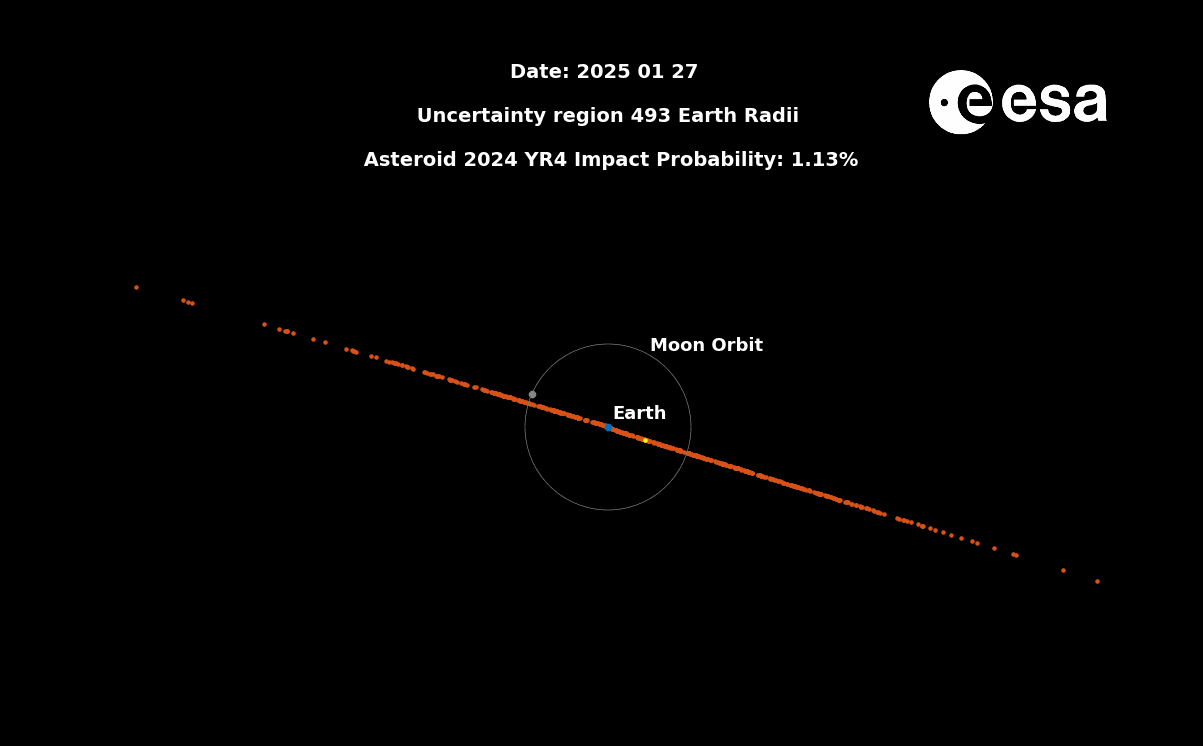
25/02/2025
7090 views
30 likes
Recent findings from the European Space Agency’s (ESA) Planetary Defence Office have significantly decreased the likelihood of asteroid 2024 YR4 colliding with Earth in 2032 to just 0.001%.
- The asteroid 2024 YR4 is expected to make a close approach to Earth on December 22, 2032.
- ESA’s initial evaluation of the asteroid’s impact risk previously peaked at 2.8% over the last two months.
- Recent telescopic observations have drastically reduced the probability of an impact to 0.001%.
- The fluctuations in the asteroid’s impact risk have followed an anticipated pattern.
Discovered on December 27, 2024, by the Asteroid Terrestrial-impact Last Alert System (ATLAS) telescope located in Río Hurtado, Chile, 2024 YR4 was quickly flagged by automated systems, such as ESA’s ‘Aegis’, indicating a slim chance of impacting Earth in 2032.
This asteroid measures approximately 40 to 90 meters across. Should it collide with Earth, it could inflict considerable damage over a localized area, which is why it has garnered significant attention from the global planetary defense community and spurred collaborative efforts from international monitoring groups.
In the following months, the ESA’s Near-Earth Object Coordination Centre and other agencies utilized advanced telescopic data to precisely refine the asteroid’s orbit and evaluate the associated risks.
Initially, the detected risk of impact surged as a greater fraction of the asteroid’s possible trajectories intersected with Earth’s orbit on December 22, 2032.
On February 18, the risk level peaked, with ESA estimating an impact probability of 2.8%. Remarkably, observations from the European Southern Observatory‘s Very Large Telescope promptly halved this probability.
Recent observations have now managed to eliminate nearly all the remaining orbital paths that could lead to an Earth impact.
Asteroid 2024 YR4 has subsequently dropped from Level 3 to Level 0 on the Torino Impact Hazard Scale and no longer demands heightened scrutiny. It is no longer listed as a top priority on ESA’s risk assessment, and the International Asteroid Warning Network has wrapped up its related actions.
The changes in the asteroid’s impact risk align with a typical trend. It is common for the probability of an asteroid impacting Earth to initially rise before rapidly declining to negligible levels as the uncertainties regarding its orbit are clarified and those paths lead away from Earth.
The shifting impact probability for 2024 YR4 is illustrated in the GIF above, which reflects the common trend outlined in ESA’s informative video on the subject, available below.
Upcoming James Webb Space Telescope observations will soon assess asteroid 2024 YR4 to refine our estimates of its dimensions.
With the introduction of new asteroid monitoring technologies, such as ESA’s Flyeye telescopes, we expect to discover an increasing number of similar objects that previously went undetected in close proximity to Earth.
By evaluating the capabilities of instruments like the Webb telescope, we will enhance our preparedness to address future planetary defense challenges.









